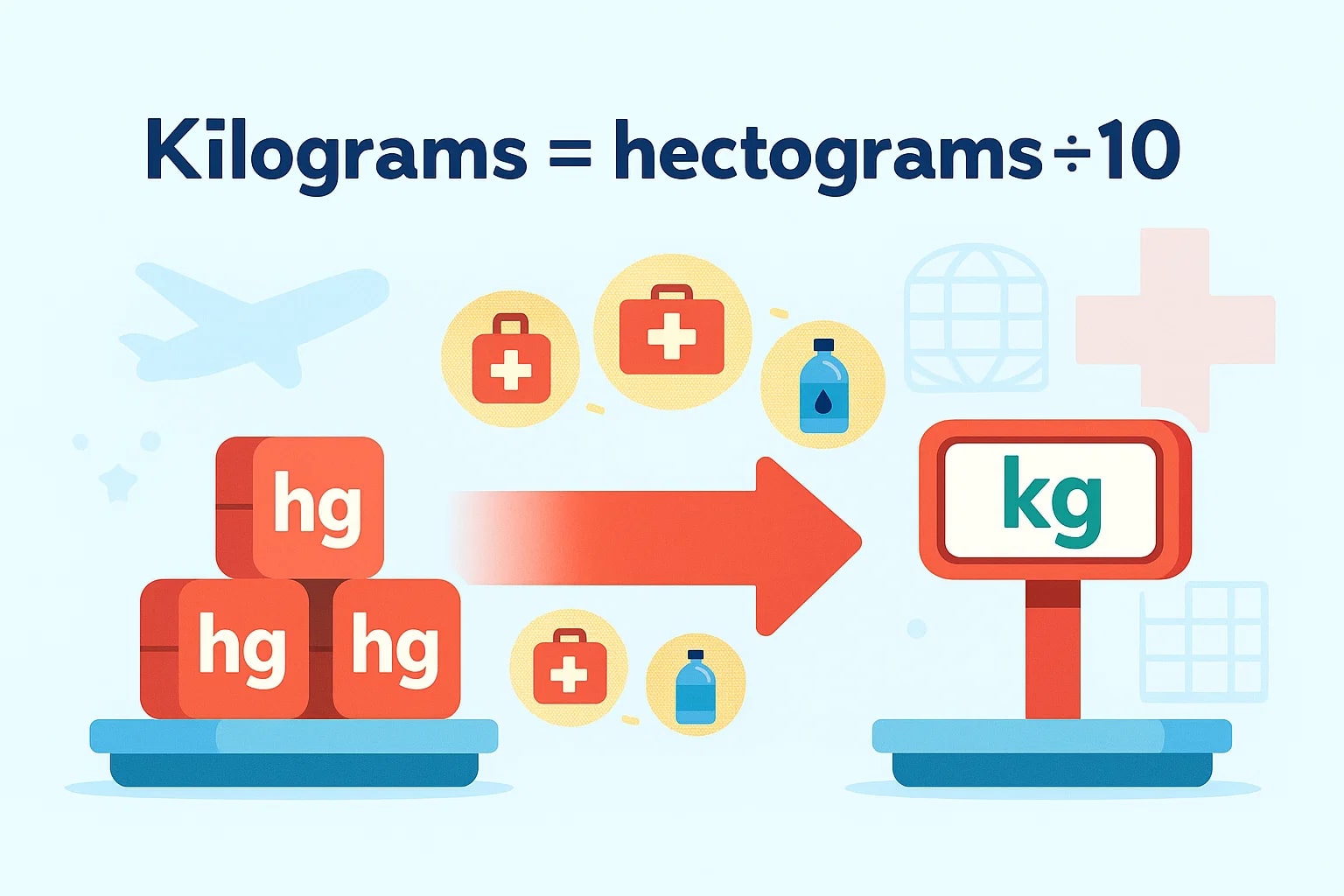hectogram to kilogram – How to convert hg to kg
The hectogram to kilogram conversion may look simple on paper, but it plays a vital role wherever bulk items are distributed, tracked, or transported. From air cargo planning to scientific fieldwork, switching between hg and kg ensures precision at both small and large scales.
What is a Hectogram (hg)?
A hectogram equals one hundred grams:1 hg = 0.1 kg
It is often used in Europe and scientific contexts for medium-range weights, especially when grams are too small and kilograms feel too large.
What is a Kilogram (kg)?
A kilogram is the base unit of mass in the International System of Units (SI).1 kg = 10 hg
Kilograms are used globally in trade, science, and daily life, making them one of the most recognized units worldwide.
How to convert hectogram to kilogram
The formula is:
kilograms = hectograms ÷ 10
Example: 45 hg ÷ 10 = 4.5 kg
The reverse conversion is:
hectograms = kilograms × 10
Example: 3.2 kg × 10 = 32 hg

For accurate results in any weight conversion — from hectogram to kilogram to other mass units — try our Weight Converter. You can also explore more measurement options in our Conversion Tools.
Do you know?
-
Hectogram fact: In parts of Southern Europe, market vendors often price products like seafood or cured meats per hectogram for easier customer choice.
-
Kilogram fact: The kilogram’s definition shifted in 2019 from a physical metal cylinder to a value derived from the Planck constant, ensuring it never changes over time.
Lifesaving by the Numbers: The Medical Supply Airlifts
In the aftermath of a powerful earthquake, an international relief team mobilized a rapid-response airlift.
The supplies — medical kits, clean water packs, and high-energy food rations — were organized into compact hectogram-packed modules. Each module was light enough for a single relief worker to carry into disaster zones on foot, often over unstable terrain.
Why hectograms? Field teams needed a manageable, repeatable unit for preparing thousands of identical supply packs. A typical first-aid kit might weigh 2.5 hg (250 g), making it easy to count and distribute in bulk without requiring large-scale equipment in the field.
However, the cargo planes transporting these supplies operated on strict kilogram-based weight limits. The loadmaster at the airport had to convert the total manifest from hectograms to kilograms to ensure the planes stayed within safe operating limits. The difference between 19 000 hg and 1 900 kg might not seem like much in conversation, but in aviation, even a small miscalculation could affect flight range and safety.
In one mission, a shipment’s manifest mistakenly listed the weight in hg without conversion. The oversight was caught just before loading, preventing a dangerous overweight situation that could have forced an emergency stop. The lesson stuck: accuracy in converting hectograms to kilograms was not just math — it was mission-critical.
By balancing the field-friendly hectogram packs with precise kilogram totals for flight planning, the relief operation moved over 20 tons of supplies in record time, reaching thousands of people in urgent need.

Conversions That Carry More Than Numbers
Switching from hectograms to kilograms isn’t just shifting a decimal point — it’s translating between two worlds of logistics. In relief work, manufacturing, or science, conversions help align local handling with large-scale transport, ensuring efficiency, safety, and accuracy. In the case of medical supply airlifts, getting it right means more than smooth operations — it means lives saved.

